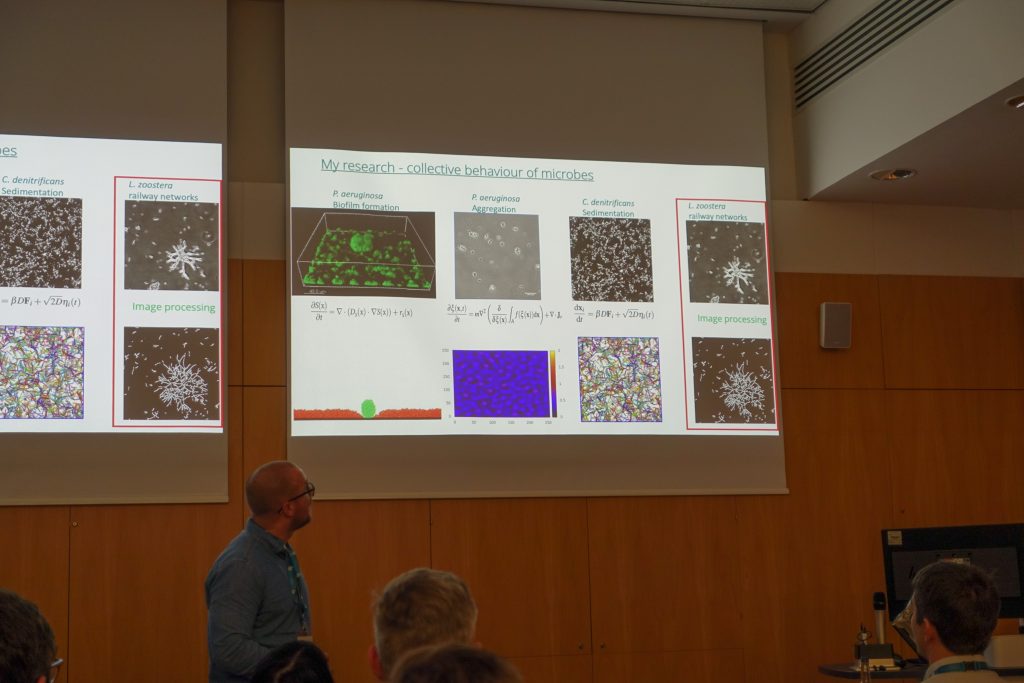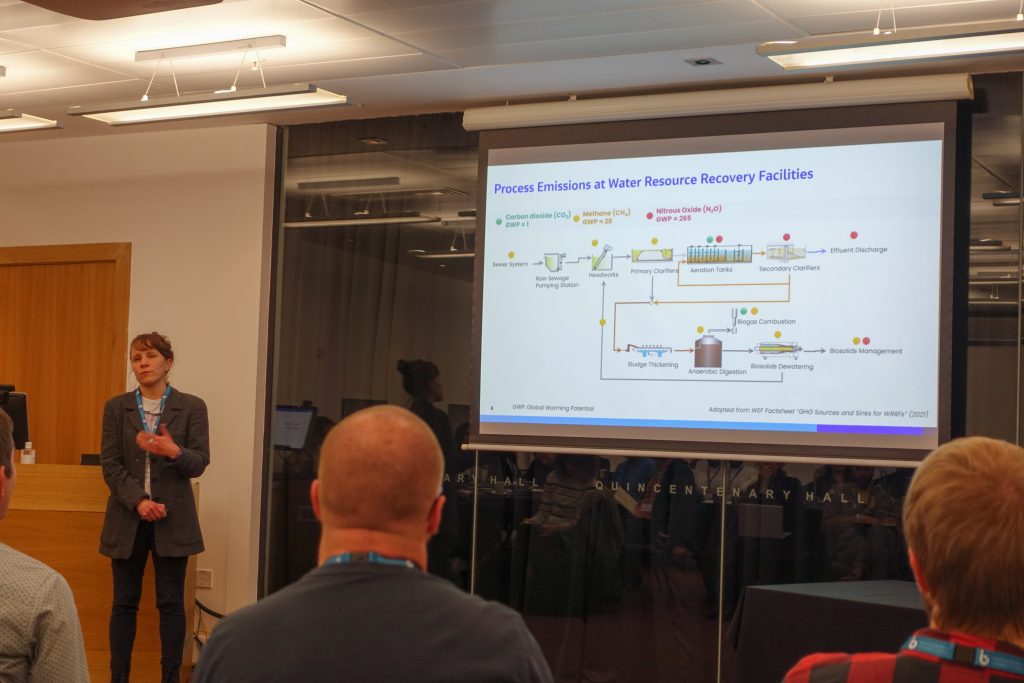How can we help you?
Please get in contact with us to find out more about ECFP and whether we can help you.
Wastewater treatment (WWT) is arguably the most important biotechnological process in world. The science behind WWT is well-established and has been in use for more than 100 years, yet unexplained and costly failures happen regularly and unpredictably. With increasing public awareness, and regulatory and sustainability pressures, plus the threat of rising sea levels on coastal WWT plants, the sector is at a crossroads, requiring an injection of fundamental understanding in order drive disruptive innovation.
This Edinburgh Complex Fluids Partnership (ECFP) event brought together industry practitioners, interdisciplinary academics and regulatory professionals to discuss sectoral challenges and strategic objectives towards improving efficiency, minimising environmental impacts, and enhancing public perception. The aim of the event was to increase awareness of how soft matter and biological physics could be applied in WWT and to identify joint problems across industry, academia and regulators that could be worked on together.

The event was kick off with an introduction from Professor Jim Dunlop, Head of the School of Physics and Astronomy at Edinburgh. Jim highlighted how WWT is increasingly becoming more interdisciplinary, having traditionally been the focus of engineering research, and is hugely relevant to physics, and soft matter physics in particular.
This was expanded upon by Dr Gavin Melaugh, Chancellor’s Fellow within SoPA and ECFP. Gavin explained that in basic terms, soft matter can be thought of as a liquid that contain bits. Soft matter physicists explore the mesoscopic phenomenology that link the microscopic interactions within these substances to their macroscopic behaviour. Current wastewater treatment research either focusses on the microscale (the microbiology of individual bacteria), or the macroscale (processing megalitres of sewage per day). Often the length scales between these two extremes are not studied, meaning that crucial mechanistic understanding linking the two are missed. This is where soft matter physicists can help, for example, studying the clustering of individual bacteria to decrease sedimentation time, how to optimise packing and densification of activated sludge containing elongated bacteria, and how bacteria and substrates interact to form biofilms.
Gavin discussed his own research into collective behaviours in microbial systems, including the biophysics of microbes used in WWT and his ongoing collaboration with Veolia UK, who manage wastewater treatment facilities here in Scotland and all over the world.
Next, we heard from Professor Bill Sloan (University of Glasgow), who discussed some of the challenges the WWT industry is facing due to global climate change and possible solutions to tackle these problems. The threat of climate change to WWT was also highlighted by Professor Tom Curtis (Newcastle University), who emphasised that it will be crucial to come together and work on these issues in an interdisciplinary way in order to make progress. The final talk of the day came from Dr Ana Soares (Cranfield University), who spoke about her work developing innovative and economically feasible solutions to enable resource recovery from WWT processes, again touching on the importance of this approach in relation to sustainability and climate change.
Across all three talks, common themes were revealed, including water re-use and recovery, climate change and achieving net zero, and how technology could help futureproof WWT systems and processes.

Pete Pearce (Farmiloe Fisher Environment Ltd) spoke about fixed film technologies for wastewater treatment. These systems use media to support biofilm growth; here, it is all about surface area, with a greater surface area giving more treatment capacity. In this system, the inputs and outputs are well known but it is less clear what happens in the middle. Pete highlighted this as an area where soft matter physicists could help.
Pete also spoke to us about thickening & dewatering of wastewater treatment sludge. These processes are needed in order to, amongst other reasons, reduce sludge volume for road transport so it can be taken to be recycled. This can be thought of as a packing problem, a field of study for soft matter physicists. Improvements in this area will reduce haulage costs and associated emissions so it is a topic of major interest to wastewater treatment. The possibility of technology transfer from other industries was discussed, along with moving to sustainable sludge drying, wherein high value products could be recovered from the process.
The afternoon session was started by Amanda Lake (Jacobs), who talked about fugitive process emissions. These refer to greenhouse gases, such as methane and nitrous oxide, that are produced at various stages across the WWT cycle. The industry has made commitments to Net Zero and Amanda took us through some of the modelling work that has already taken place to identify where process emissions are being produced. Amanda also outlined the WWT industry could positively contribute to a variety of other sectors to help them to reduce emissions, for example, by producing biofuels for energy production uses.
The final industry talk of the day came from Conall Holohan (NVP Energy), who discussed future innovations in WWT, focusing on NVP Energy’s “Ambi-robic” technology. This uses a low-temperature anaerobic process to treat wastewater. Compared to an activated sludge process, there is a 95% reduction in the production of waste sludge, uses 80% less energy, and reduces greenhouse gas emissions by 98%. Working with Dwr Cymru – Welsh Water (UK Utility), NVP have built a full-scale version of their technology at Dwr Cymru’s municipal wastewater treatment plant in Builth Wells, UK. This is the first proof of concept for full-scale, direct, low-temperature anaerobic treatment of wastewater and demonstrates the potential for innovations in this space.
We finished up by hearing from Edinburgh Innovations (EI) and the National Biofilms Innovation Centre (NBIC). EI are the University’s commercialisation arm and work with ECFP to manage our collaborative projects and contract research. NBIC is an Innovation Knowledge Centre funded by BBSRC, Innovate UK, and the Hartree Centre with a mission to establish a network of research and innovation capacity catalysing collaboration with industry in the study of biofilms to achieve breakthrough innovation. They are active in the field of WWT and engineered water systems and kindly sponsored this event.
Overall, it was a fantastic two days of engaging conversations and discussing. We would like to sincerely thank all the attendees and speakers, and to NBIC and the School of Physics and Astronomy at the University of Edinburgh for their support. We looking forward to following up on project ideas and collaborations!
Please get in contact with us to find out more about ECFP and whether we can help you.
ECFP delivers fundamental product insight enabling improved formulation and processing for a more sustainable future.